
JOURNAL OF COMPUTER-AIDED MOLECULAR DESIGN
Scope & Guideline
Pioneering New Frontiers in Molecular Design and Screening
Introduction
Aims and Scopes
- Computational Drug Design and Discovery:
The journal emphasizes the use of computational approaches for drug design, including molecular docking, QSAR modeling, and virtual screening, to identify potential drug candidates and optimize their properties. - Molecular Dynamics Simulations:
A significant focus is placed on molecular dynamics simulations to study the behavior of biomolecules and their interactions with ligands, providing insights into stability, conformational changes, and binding affinities. - Machine Learning and AI in Molecular Design:
The incorporation of machine learning and artificial intelligence techniques is a prominent theme, aimed at enhancing predictive modeling, optimizing drug properties, and accelerating the drug discovery pipeline. - Structure-Based and Ligand-Based Approaches:
The journal covers both structure-based and ligand-based methodologies, facilitating a comprehensive understanding of molecular interactions and guiding the design of new compounds. - Interdisciplinary Approaches:
Encouraging interdisciplinary research, the journal integrates insights from chemistry, biology, and computational science to address complex challenges in molecular design and drug discovery.
Trending and Emerging
- AI-Driven Drug Discovery:
There is a significant increase in research focused on the application of artificial intelligence and machine learning in drug discovery, particularly in optimizing molecular properties and enhancing predictive accuracy. - Integration of Quantum Mechanics with Molecular Simulations:
Emerging studies are increasingly integrating quantum mechanical approaches with molecular dynamics simulations, offering deeper insights into molecular interactions and improving the accuracy of binding affinity predictions. - High-Throughput Virtual Screening:
The trend towards high-throughput virtual screening methods is gaining momentum, enabling the rapid assessment of large compound libraries and facilitating faster identification of potential drug candidates. - Multi-Parameter Optimization in Drug Design:
Recent papers highlight the growing importance of multi-parameter optimization frameworks that consider various physicochemical and biological properties simultaneously to streamline the drug design process. - Data-Driven Approaches in Computational Chemistry:
The use of data-driven methodologies, including deep learning and ensemble methods, is on the rise, showcasing their potential for improving the efficiency and accuracy of molecular modeling and predictions.
Declining or Waning
- Traditional QSAR Models:
Although quantitative structure-activity relationship (QSAR) modeling remains important, there is a noticeable decline in the emphasis on traditional QSAR techniques, likely due to the increasing adoption of machine learning methods that offer more sophisticated predictive capabilities. - Basic Molecular Docking Techniques:
The frequency of publications focusing solely on conventional molecular docking without incorporating advanced methodologies or machine learning enhancements has decreased, suggesting a shift towards more integrated and complex approaches. - In Vitro Validation Studies:
There seems to be a waning interest in standalone in vitro validation studies without a strong computational component, as the field increasingly values integrated computational-experimental workflows. - Exploratory Data Analysis in Drug Discovery:
While exploratory data analysis remains crucial, its standalone presence in publications has diminished, overshadowed by more focused studies employing advanced modeling and simulation techniques.
Similar Journals

SAR AND QSAR IN ENVIRONMENTAL RESEARCH
Advancing Environmental Insights through Molecular Relationships.SAR and QSAR in Environmental Research is a leading journal published by Taylor & Francis Ltd, focusing on the integration of Structure-Activity Relationships (SAR) and Quantitative Structure-Activity Relationships (QSAR) within the realm of environmental science. Since its inception in 1993, the journal has been a pivotal platform for disseminating innovative research that bridges the gap between chemistry and environmental sustainability, ranking in the Q3 quartile for Bioengineering, Drug Discovery, and miscellaneous Medicine categories as of 2023. Featuring a compelling collection of peer-reviewed articles, it caters to academic and professional audiences seeking to enhance their understanding of molecular interactions and their implications for environmental health. Although the journal does not currently offer Open Access options, its rigorous editorial standards ensure high-quality, impactful publications that are crucial for advancing methodologies in pharmacology, toxicology, and bioengineering. With an ISSN of 1062-936X and an E-ISSN of 1029-046X, SAR and QSAR in Environmental Research continues to serve as an essential resource for researchers, academics, and practitioners dedicated to innovative approaches in environmental research.

Journal of Computer Chemistry-Japan
Advancing the Frontiers of Computational ChemistryJournal of Computer Chemistry-Japan, published by SOC COMPUTER CHEMISTRY, JAPAN, is a dedicated platform for researchers and professionals in the interdisciplinary fields of computational chemistry and chemical informatics. Though the journal does not currently provide open access, it maintains a rigorous selection process for contributions, ensuring the publication of high-quality, peer-reviewed research. With a focus on advancing computational methods and techniques to solve complex chemical problems, the journal aims to bridge the gap between theoretical chemistry and practical applications, making it an invaluable resource for academics and industry professionals alike. As the complexity of chemical systems continues to rise, the relevance of computational approaches in material science, drug discovery, and molecular modeling has never been more critical. Researchers are encouraged to engage with the contents of this journal, which showcases innovative studies, methodologies, and discussions relevant to the evolving landscape of computer-aided chemistry.
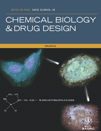
Chemical Biology & Drug Design
Fostering breakthroughs in molecular medicine and drug design.Chemical Biology & Drug Design, an esteemed publication by WILEY, serves as a vital platform for the dissemination of pioneering research in the interdisciplinary fields of biochemistry, drug discovery, molecular medicine, organic chemistry, and pharmacology. With a dedicated commitment to advancing the understanding of chemical interactions and drug development, this journal not only fosters innovation but also bridges the gap between theoretical research and practical applications. It boasts an impressive impact factor and is recognized in the 2023 category quartiles as Q3 in Biochemistry and Molecular Medicine, and Q2 in Drug Discovery, Organic Chemistry, and Pharmacology, indicating its relevance and influence in these crucial areas. The journal’s rankings across various Scopus categories further solidify its position as a reputable resource for researchers, professionals, and students striving to stay at the forefront of medicinal chemistry and drug design. While primarily traditional access-based, the journal's evolving scope from 2006 to 2024 ensures an ongoing contribution to essential scientific dialogue, making it an indispensable read for those committed to advancing health sciences.
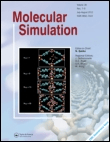
MOLECULAR SIMULATION
Innovating computational methods for complex molecular challenges.MOLECULAR SIMULATION, published by TAYLOR & FRANCIS LTD, stands as a pivotal platform in the interdisciplinary landscape of molecular modeling and simulation, bridging the fields of chemistry, physics, and materials science. Since its inception in 1987, this journal has been dedicated to publishing high-quality research that advances the understanding of complex molecular systems. With a variety of articles covering innovative computational methods and their applications across diverse domains, it resonates well with both established researchers and emerging scholars. Although currently not an open access journal, it maintains a respectable presence within the academic community, illustrated by its Q3 quartile rankings in key categories such as Chemical Engineering, Condensed Matter Physics, and Information Systems as of 2023. Further, its Scopus rankings position it favorably within the respective fields, making it an essential resource for anyone interested in the quantitative aspects of molecular research. With its comprehensive scope, MOLECULAR SIMULATION continues to foster collaboration and innovation, helping to bridge theoretical research with practical applications.
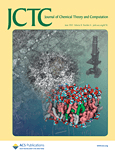
Journal of Chemical Theory and Computation
Enhancing Understanding of Molecular DynamicsThe Journal of Chemical Theory and Computation, published by the American Chemical Society, stands at the forefront of the multidisciplinary fields of computational chemistry and computer science applications. With an impressive impact factor and ranking in the top quartile (Q1) in both Physical and Theoretical Chemistry and Computer Science Applications, this journal serves as a vital platform for researchers and professionals seeking to publish cutting-edge research on computational methodologies and innovative theoretical approaches. Spanning from 2005 to 2024, the journal aims to disseminate high-quality studies that advance understanding of molecular systems and the development of computational techniques. Its esteemed reputation is reflected in its robust metrics, ranking #23 in Physical and Theoretical Chemistry and #101 in Computer Science Applications by Scopus, showcasing its significant influence in the academic community. While it does not currently offer open access, the journal remains accessible to a wide audience, making it an essential resource for those engaged in the evolving landscape of chemical theory and computation.
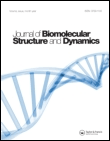
JOURNAL OF BIOMOLECULAR STRUCTURE & DYNAMICS
Unraveling the Complexities of Molecular InteractionsJOURNAL OF BIOMOLECULAR STRUCTURE & DYNAMICS, published by TAYLOR & FRANCIS INC, serves as a pivotal platform for the dissemination of original research in the fields of biochemistry, molecular biology, and structural biology. With an ISSN of 0739-1102 and an E-ISSN of 1538-0254, this esteemed journal has garnered attention for its rigorous peer-review process and commitment to high-quality scientific inquiry since its inception in 1981. Ranking in the Q2 quartile for miscellaneous medicine and the Q3 quartile for both molecular and structural biology, it consistently demonstrates a significant impact within its specialties, evidenced by a high Scopus ranking. Researchers, professionals, and students are encouraged to engage with cutting-edge studies addressing the complex interactions and dynamics of biomolecules, making this journal a vital resource for advancing knowledge in the biological sciences. Although it does not offer open access options, its valuable contributions are vital for the ongoing discourse within the scientific community.
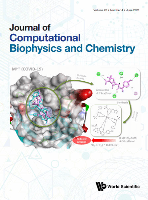
Journal of Computational Biophysics and Chemistry
Connecting Scholars for a New Era of Scientific InnovationThe Journal of Computational Biophysics and Chemistry, published by World Scientific Publishing Co. Pte Ltd, is a distinguished platform dedicated to advancing the fields of biophysics and computational chemistry. With an ISSN of 2737-4165 and an E-ISSN of 2737-4173, this journal has garnered attention since its inception, earning a Q3 ranking in Computational Theory and Mathematics and Q4 rankings in both Computer Science Applications and Physical and Theoretical Chemistry as of 2023. The scope of the journal encompasses innovative research that integrates computational techniques with biochemical applications, making it essential reading for researchers, professionals, and students alike. With open access options available, the journal ensures that cutting-edge findings are easily accessible to a global audience, thereby fostering collaboration and innovation in the scientific community. Based in Singapore, the journal aims to converge ideas and methodologies from 2021 to 2024, paving the way for transformative insights in computational methods. Join a community at the forefront of research and applications that bridge disciplines through rigorous scholarship and pioneering discoveries.
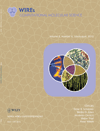
Wiley Interdisciplinary Reviews-Computational Molecular Science
Unlocking the Potential of Molecular Interactions through ComputationWiley Interdisciplinary Reviews: Computational Molecular Science is a premier journal published by WILEY, dedicated to the intersection of computational techniques and molecular science. Boasting an impressive impact factor and consistently ranking in the Q1 category across several key disciplines including Biochemistry, Computational Mathematics, Computer Science Applications, Materials Chemistry, and Physical and Theoretical Chemistry, this journal plays a crucial role in disseminating high-quality research that bridges multiple fields. With its focus on providing a platform for interdisciplinary dialogue and innovative computational solutions, it serves as an essential resource for researchers, professionals, and students eager to push the boundaries of molecular science. While the journal does not currently offer open access, it remains a vital conduit for scholarly communication, fostering advancements in understanding molecular interactions through computational methods. The journal is based in the United States, contributing to its global outreach and impact in the scientific community.
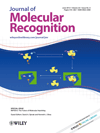
JOURNAL OF MOLECULAR RECOGNITION
Bridging Discoveries in Molecular BiologyJOURNAL OF MOLECULAR RECOGNITION, published by Wiley, is an esteemed academic journal that has been at the forefront of molecular biology and structural biology research since its inception in 1988. With its ISSN 0952-3499 and E-ISSN 1099-1352, this journal serves as a vital platform for disseminating innovative studies and findings in the realms of biochemical interactions and molecular structure elucidation. Although currently positioned in Quartile 4 of both molecular and structural biology categories based on 2023 metrics, the journal is dedicated to advancing knowledge in quantitative and qualitative molecular recognition processes. Researchers, professionals, and students alike will find that this journal is instrumental in keeping abreast of cutting-edge developments in the field, even as it continues to build its impact and reputation within the dynamic research landscape. Located in the United Kingdom, it is committed to promoting a diverse range of studies that drive forward the understanding of molecular interaction phenomena, thus empowering its readership to contribute effectively to the field.

BIOPHYSICAL CHEMISTRY
Innovating research at the crossroads of chemistry and biology.BIOPHYSICAL CHEMISTRY, published by Elsevier, is a prestigious journal with a long-standing tradition since its inception in 1973. This highly respected journal focuses on the intersections of biochemistry, biophysics, and organic chemistry, providing a critical platform for researchers, professionals, and students to disseminate pivotal findings in these dynamic fields. With an impressive impact factor that reflects its robust academic influence and high citation rates, it ranks within the Q2 quartile among its peers in multiple categories, indicating its significance in the scholarly community. The journal, hosted in the Netherlands, encompasses a diverse range of topics, from molecular interactions to protein folding, and serves as an essential resource for those engaged in cutting-edge research. Researchers looking to share their work with a global audience will find BIOPHYSICAL CHEMISTRY an invaluable outlet, fostering the advancement of knowledge in this crucial area of science. For more information, visit the journal's page on the Elsevier platform.